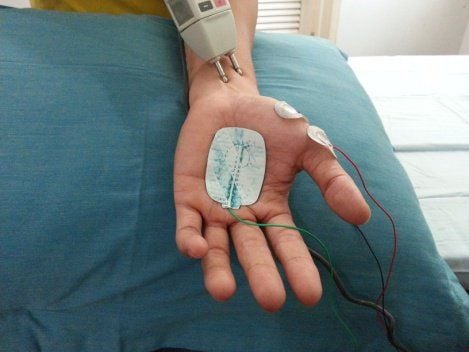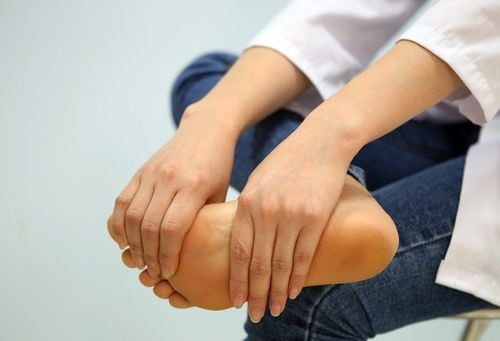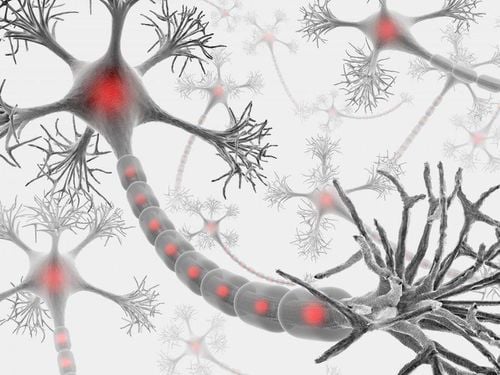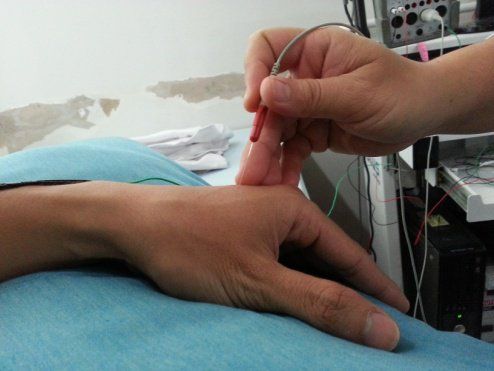This is an automatically translated article.
Peripheral nerve damage is diagnosed based on history of trauma combined with clinical symptoms confirmed by laboratory tests. Treatment modalities vary depending on the extent of the damage.
1. Diagnosis of peripheral nerve damage
First, you will be asked about the medical condition including the medical history such as previous accidents or surgery, and the symptoms experienced. Next is a physical and neurological exam. If the neurologic exam suspects signs of peripheral nerve damage, your doctor will recommend that you perform diagnostic tests including:
Electromyography (EMG): During an EMG, a thin needle electrode is inserted into your body, recording the electrical activity of muscles at rest and in motion. If you observe a decrease in muscle activity, you may have nerve damage. Nerve conduction study: Electrodes are placed at two different points in the body to measure how well electrical signals travel through nerves. Magnetic resonance imaging (MRI): MRI uses a magnetic field and radio waves to create detailed images of the area affected by nerve damage.
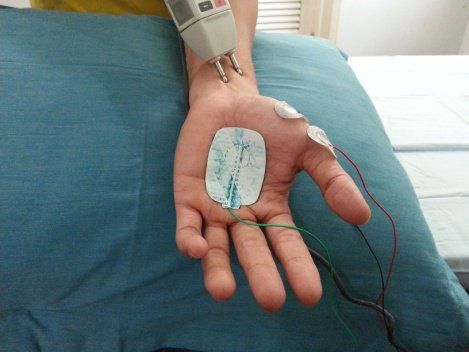
Điện cơ (EMG) chẩn đoán tổn thương dây thần kinh ngoại biên
2. Treatment of peripheral nerve damage
If the peripheral nerves are injured but not cut, the wound is more likely to take longer to heal. Peripheral nerves that have been completely severed are difficult to treat and may not be restored.
Treatment will be determined based on the extent and cause of the injury as well as the extent of nerve recovery.
If the nerves are healing, you may not need surgery, but need to rest the damaged area until it heals. Nerves heal slowly, which can take months or years. You need to go for regular check-ups to make sure your recovery is on track.
If the injury is caused by an illness, the doctor will treat the illness. During treatment, depending on the extent of the damage, peripheral nerve agents may be prescribed aspirin or ibuprofen (Advil, Motrin IB) for pain, medications for depression, seizures, or dementia. Sleep to relieve nerve pain. In some cases, you may need corticosteroid injections to relieve pain.
Alternatively, physical therapy may be suggested to prevent stiffness and restore function.

Thuốc aspirin hoặc ibuprofen giúp điều trị thần kinh ngoại biên
2.1. Surgical treatment If the wound is not likely to heal completely, the doctor will use an EMG test in the operating room to see if the scarred nerve (nodular fibrosis) is healing. Performing a direct EMG test on the nerve is more accurate and reliable than a skin test.
Sometimes the nerve is inside a tight space or is pinched by scarring. In these cases, the surgeon will widen the narrowing or free the nerve from the scar.
Sometimes part of the nerve is completely cut or damaged beyond repair. Your doctor will either remove the damaged part and reattach the healthy nerve endings, or transplant part of a nerve from another part of the body.
If you have particularly severe nerve damage, your doctor will recommend surgery to restore function to vital organs by transferring tendons from one muscle to another.
2.2. Rehabilitation Some of the treatments that can help restore function to damaged muscles include:
Splints : Keep the affected limb, finger, hand or foot in the proper position to improve improve muscle function. Electrical stimulator: Helps activate muscles in the area of the injured nerve that is recovering. However, this treatment may not work for everyone. Physical therapy: Includes specific exercises to keep damaged muscles and joints active. Physical therapy helps prevent stiffness and helps restore function and sensation. Exercise: Exercise improves muscle strength, maintains range of motion, and reduces muscle spasticity.

Vật lý trị liệu giúp ngăn ngừa cứng khớp, giúp phục hồi chức năng và cảm giác
3. What to prepare when seeing the doctor?
Other suggestions for getting the most out of your doctor's appointment include:
Write down all of your symptoms, including the cause of your injury, the duration of your symptoms, and the course of your symptoms. by the time. Make a list of all the medications, vitamins, and supplements you're taking. Don't hesitate to ask questions. Children and adults with peripheral nerve damage have several options for recovering lost function. Injury to the peripheral nerves can leave a number of complications, so timely diagnosis and treatment are very important. Therefore, you should go to the nearest medical facility for timely examination and treatment.
With many years of experience in the examination and treatment of neurological diseases, Vinmec International General Hospital has now become one of the major health care centers, capable of examining and screening. and treat many specialized diseases. Therefore, if there are signs of peripheral nerve damage, patients can go to Vinmec International General Hospital to examine and receive support and advice from doctors.
Please dial HOTLINE for more information or register for an appointment HERE. Download MyVinmec app to make appointments faster and to manage your bookings easily.
Reference source: mayoclinic.org




